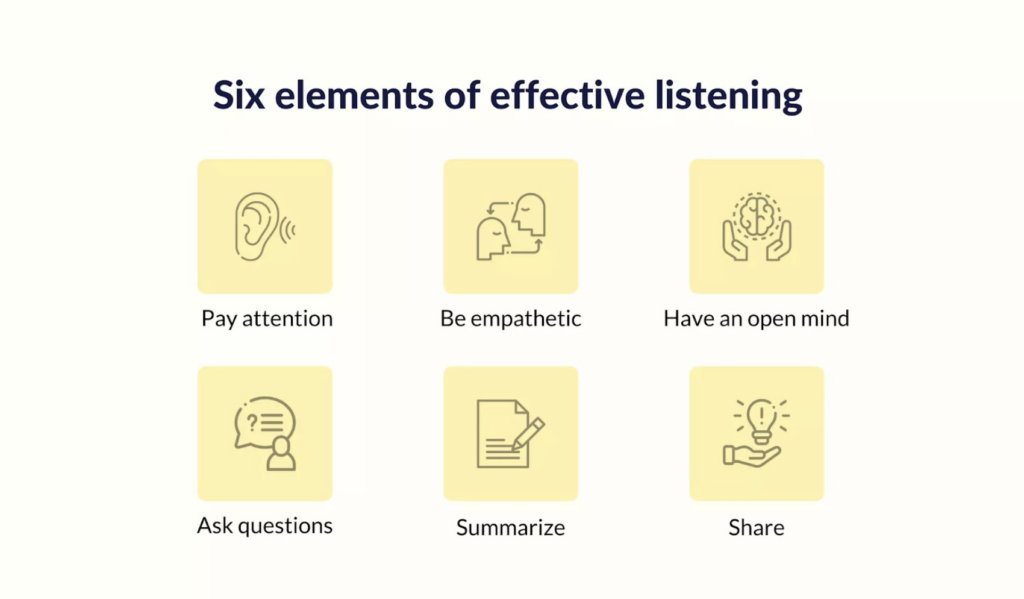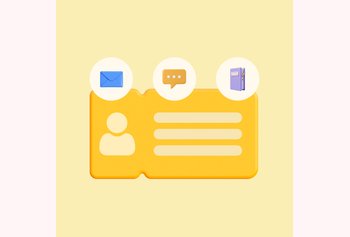10 Customer Service Techniques to Master in 2025

Table of contents
Good customer service is no longer the exception but the standard. The bar is much higher now, more than ever before in fact.
So as someone working in customer support you need to make sure you’re at the top of your game. You need to work on honing your abilities so that you can create great experiences for your customers and leave a lasting impression.
In this guide, I’m going to talk about 10 customer service techniques you should pick up so you can do just that.
Whether you’ve freshly broken into a customer support role or are a seasoned professional looking to sharpen your skills, these techniques will help you craft exceptional customer experiences.
Let’s jump right in.
Table of Contents
- 10 Essential Customer Service Techniques You Need to Master
- 1. ELI5 (Explain It Like I’m 5) Technique
- 2. The HEARD Technique
- 3. The “Feel, Felt, Found” Technique
- 4. Using engaged, positive body language
- 5. Echoing, Paraphrasing, and Summarizing Technique
- 6. The “Positive Language” Technique
- 7. FAB (Feature, Advantage, Benefit) Technique
- 8. The Active Listening Technique
- 9. CARP (Complain, Apologize, Resolve, Prevent) Technique
- 10. The Open-Ended Questions Technique
- Bonus Tips That Can Complement Customer Service Techniques
- Final Word
10 Essential Customer Service Techniques You Need to Master
Here are 10 customer service techniques you need to begin implementing in your customer interactions to leave a lasting impression.
1. ELI5 (Explain It Like I’m 5) Technique
The ELI5 technique involves explaining complex concepts in a way that even a child could grasp them. This means using simple language, avoiding technical jargon, and breaking down information into easy-to-digest pieces.
When support agents use the ‘Explain It Like I’m 5’ technique, they’re trying to make it so that customers of all backgrounds can understand the solution or information being shared.
It’s especially helpful for demystifying technical issues and making the customer feel comfortable and informed. This technique builds confidence and reduces confusion, leading to a better customer experience.
Some steps you can take to implement this technique are –
- Use Simple Language: Avoid technical jargon and complex terms. Opt for everyday words that anyone can understand.
- Break Down Information: Divide the explanation into small, digestible parts. This helps in building understanding step-by-step.
- Use Analogies: Relate the explanation to familiar concepts or everyday scenarios. Analogies can make abstract ideas more concrete.
- Avoid Assumptions: Do not assume the customer knows background information. Start from the basics to ensure clarity.
- Check Understanding: Ask follow-up questions to confirm the customer understands the explanation. Adjust if needed.
So for instance if a customer says – “Can you explain how cloud storage works? I’m not very tech-savvy.” You can explain it like this –
“Imagine you have a special box for your important things like photos and documents, but instead of keeping it at home, it’s stored safely in a big warehouse far away. Whenever you need something, you can ask for it, and it’s delivered to you instantly, no matter where you are.
That’s how cloud storage works. Your files are kept on powerful computers (the ‘warehouse’) somewhere else, and you can access them from any device whenever you need. Just like with the box, you don’t need to carry your files—they’re safely stored and always available. Is that helpful?”
Notice how you’ve used analogies and simple language and also checked for clarity at the end?
Note: One thing I’d like to bring your attention to with this method is, you’ll need to be careful you don’t take it too far, to the point that you sound condescending to the customer. Be respectful and follow the actionable tips I shared above, you’ll be okay.
2. The HEARD Technique
As the name suggests, this customer service technique focuses on ensuring that your customer feels heard and valued. The HEARD technique is built up of five components – Hear, Empathize, Apologize, Resolve, and Diagnose. This technique is especially useful in scenarios where a customer has had a negative experience with your brand.
- Hear: Listen attentively to the customer’s concerns without interruption. This step is crucial for gathering all the details and understanding the issue from the customer’s perspective.
- Empathize: Show genuine empathy by acknowledging the customer’s feelings and frustrations. Empathy helps in building rapport and shows the customer that you care about their experience.
- Apologize: Offer a sincere apology, regardless of fault. Apologizing shows accountability and a willingness to make things right.
- Resolve: Focus on finding an effective solution to the problem. Clearly communicate the steps you will take to resolve the issue, setting realistic expectations.
- Diagnose: After resolving the issue, analyze the situation to identify the root cause. This helps in preventing future occurrences and improving the overall customer experience.
This is a great de-escalation technique in customer service. It can help you navigate tense situations smoothly while also establishing to the customer that you value their thoughts and that you’re there to help them.
3. The “Feel, Felt, Found” Technique
This one’s pretty self-explanatory and simple but it’s also highly effective. The “Feel, Felt, Found” technique is essentially a method for empathizing with customers while guiding them towards a solution. It helps in acknowledging the customer’s feelings, sharing similar experiences, and offering a positive resolution.
Here’s how this works.
First, you acknowledge the customer’s emotions and concerns. Show that you understand how they feel.
Then you share a similar experience, either a personal one or something another customer has been through, to build rapport and relatability.
And finally, present the solution or outcome that was discovered, demonstrating how it resolved the issue.
This technique prioritizes building trust with the customer. It shows them that you’ve dealt with this before which means you know what you’re doing and can be trusted to provide them with a helpful solution. Basically, it’s a way of making your customers feel comfortable and letting them know that they’re in good hands.
4. Using engaged, positive body language
This is more of a tip than a technique and a very important one at that. Whether you’re on a video call with a customer, meeting them in person, or even on a phone call, the way you interact – everything from your body language to your tone of voice – should give off a positive impression.
What does that mean?
In a physical setting it could include –
- Sitting up straight with good posture
- Smiling and nodding to let them know you’re paying attention
- Maintaining eye contact
- Using a warm, friendly tone
Similarly, in a virtual setting you’d do more of the same while emphasizing on verbal cues –
- Use affirmative sounds like “Uh-huh,” “I see,” and “Yes” to show you’re listening
- Smile while talking (yes it makes a difference even on phone calls)
- Make sure there’s no disturbance or noise in the background and you’re clearly audible
- Adjust your tone and energy to match that of the customer
This makes a huge difference in how the customer feels after the interaction is over. It can be the difference between leaving them frustrated vs satisfied.
5. Echoing, Paraphrasing, and Summarizing Technique
This customer service technique focuses on restating the customer’s words in different ways to confirm your understanding and show that you’re actively listening. It helps clarify issues, ensures alignment, and demonstrates empathy.
Echoing is when you repeat key phrases or words the customer uses. This helps in acknowledging their concerns and feelings. It shows you’ve heard them and understood their problem. Paraphrasing is essentially restating the customer’s message in your own words to confirm understanding and clarity. And summarizing is where you provide a concise overview of the main points discussed, capturing the essence of the conversation.
You’re essentially letting the customer know that you’re on the same page and that you can now help them ably. Here’s a few beginner phrases to implement this technique in your customer interactions –
- Echoing: Use statements like, “So, you’re saying that…”
- Paraphrasing: Start with, “In other words, you mean…”
- Summarizing: Conclude with, “To summarize, the issue is…”
6. The “Positive Language” Technique
The “Positive Language” technique focuses on using constructive and affirmative language to provide a positive customer experience. It involves framing statements in a way that emphasizes solutions and possibilities rather than limitations.
Using positive language means avoiding negative words and phrases, and instead highlighting what can be done. This approach helps in maintaining a pleasant tone and reducing customer frustration, even in challenging situations.
Here’s a few steps you can take to put this into practice –
- Replace Negative Phrases: Instead of saying “I can’t,” use “Here’s what I can do.”
- Focus on Solutions: Emphasize the actions you will take, rather than the obstacles.
- Use Encouraging Words: Incorporate words like “absolutely,” “definitely,” and “certainly” to convey enthusiasm and assurance.
By employing positive language, support agents can create a more uplifting and supportive atmosphere, which helps in building customer satisfaction and loyalty.
7. FAB (Feature, Advantage, Benefit) Technique
The FAB technique is a communication strategy used to articulate the value of a product or service by highlighting its features, advantages, and benefits. This technique is typically used to communicate with customers who are trialing your product or on a freemium plan. The intention here is to nudge them to a paid plan by communicating its value and benefits.
It’s called the FAB technique because you focus on communicating the features, advantages, and benefits of using your product.
This technique helps customers understand not just what a product does, but why it matters to them. So the next time you’re having a conversation where you’re trying to upsell to the customer or address a question/concern about your product, you should try this technique –
- Identify Key Features: Start by listing the main features of your product or service.
- Clarify the Advantages: Explain why these features are beneficial compared to alternatives.
- Focus on Customer Benefits: Always tie the discussion back to how it helps the customer specifically, improving their experience or solving a problem.
8. The Active Listening Technique
Active listening is a communication technique that involves fully concentrating, understanding, remembering, and then responding to what the customer is saying. It’s essential for demonstrating genuine concern and addressing customer needs effectively.

Active listening goes beyond just hearing what the other person is saying. It involves paying full attention, noting the tone and emotions, and ensuring comprehension. Here are a few actionable tips on how to ‘actively listen’ to a customer-
- Avoid Interruptions: Let the customer finish speaking before responding.
- Show Engagement: Use verbal nods like “I see” or “Go on” to encourage them to continue.
- Ask Clarifying Questions: If something is unclear, ask questions to gain a better understanding.
- Reflect and Summarize: Repeat key points to confirm understanding and show that you’re paying attention.
Recommended Read:17 Key Customer Service Skills + Ways to Develop Them
9. CARP (Complain, Apologize, Resolve, Prevent) Technique
The CARP technique is a structured method for effectively handling customer complaints and turning negative experiences into positive ones. The four steps involved in this technique are –
- Complain: Listen to the customer’s complaint without interrupting, allowing them to fully express their concerns.
- Apologize: Offer a sincere apology for the inconvenience or issue, showing empathy and understanding.
- Resolve: Focus on finding a solution to the problem. Clearly communicate the steps that will be taken to address the issue.
- Prevent: Identify ways to prevent similar issues in the future. This could involve providing feedback to the relevant teams or implementing new policies.
The CARP technique helps manage customer complaints efficiently, demonstrate accountability, and ensure continuous improvement. This approach is not just focused on resolving the immediate issue at hand. It also emphasizes on implementing proactive measures that prevent similar issues from happening in the future.
10. The Open-Ended Questions Technique
The Open-Ended Questions technique involves asking questions that require more than a yes or no answer. This encourages customers to provide detailed responses, giving support agents a clearer understanding of their issues and needs.
You try to uncover the full scope of a customer’s situation. Open-ended questions also encourage customers to express their thoughts and feelings, which can reveal underlying issues or concerns. Here are some actionable tips for this technique –
- Start with “How,” “What,” or “Can you explain…” These prompts encourage expansive answers.
- Avoid Leading Questions: Let the customer share their perspective without influence.
- Follow Up: Use the customer’s responses to ask further clarifying questions, deepening your understanding.
Here are a few examples of open-ended questions you can ask your customers –
- “Can you explain the challenges you’re facing with [specific feature or product]?”
- “What steps have you already taken to try and resolve this issue?”
- “How is this issue impacting your work or experience with our product?”
- “What specific outcomes are you hoping to achieve with our support?”
- “Could you walk me through what happened just before you encountered the problem?”
Bonus Tips That Can Complement Customer Service Techniques
Now that we’ve discussed ten key techniques you should use in your day-to-day as a customer service professional, let me do a quick rundown of tips that can supplement what you’ve learnt so far in this guide.
- Regular Training and Development: Stay updated with the latest trends and tools in customer service. Continuous learning helps refine skills and adapt to new challenges.
- Seek Feedback: Regularly ask for feedback from customers and colleagues to identify areas for improvement.
- Practice Patience and Positivity: Remain calm and composed, even in difficult situations. Keep in mind that the customer’s anger is not personal.
- Set Clear Goals: Establish specific, measurable goals for improving customer service performance.
- Monitor and Analyze Performance: Use metrics and customer feedback to assess the effectiveness of your support team and identify areas for enhancement.
- Stay Organized: Ensure every customer interaction is properly delegated and track till the point of resolution. Do timely follow-ups with customers to stay proactive and on top of things.
Final Word
Now you know the customer service techniques you should use on a daily basis to ensure you’re creating the right experience for your customers. The goal is not just to solve the problem. It’s to solve the problem with efficiency and warmth that leaves a lasting, positive impression in the mind of the customer.
Remember, a customer complaint isn’t a bad thing, it’s an opportunity for your organization to show its customer-centric values.

































